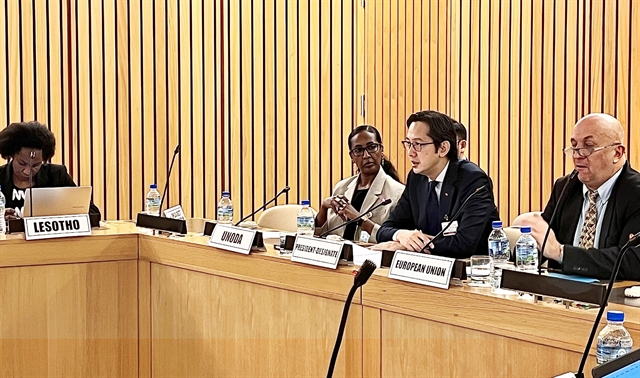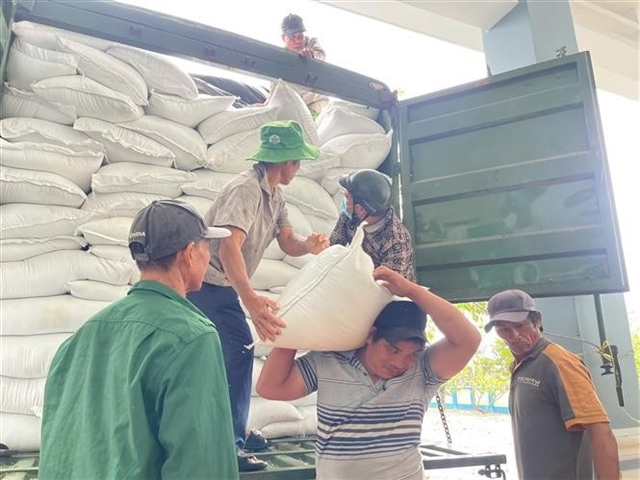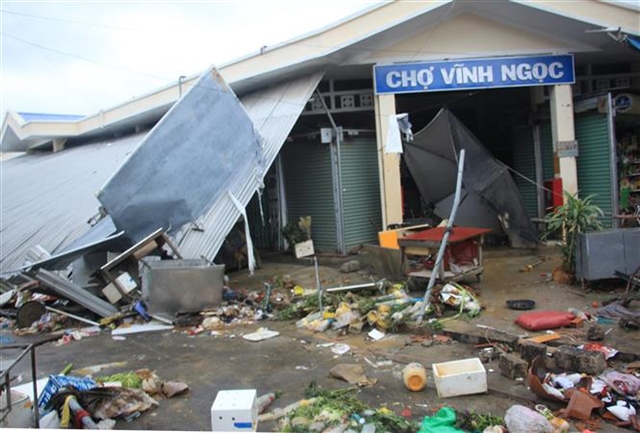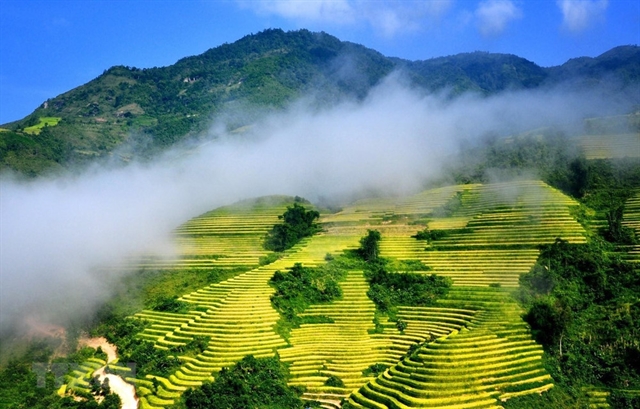 Features
Features
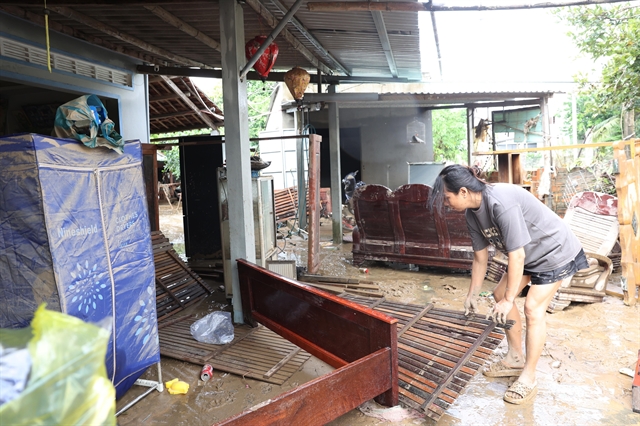
Each type of patterned brocade cloth is not only specific to a traditional craft village in Việt Nam, but also a demonstration of the cultural characteristics of ethnic minority groups. Efforts are being made to preserve this delicate craft. Bùi Quỳnh Hoa and Văn Dũng report.
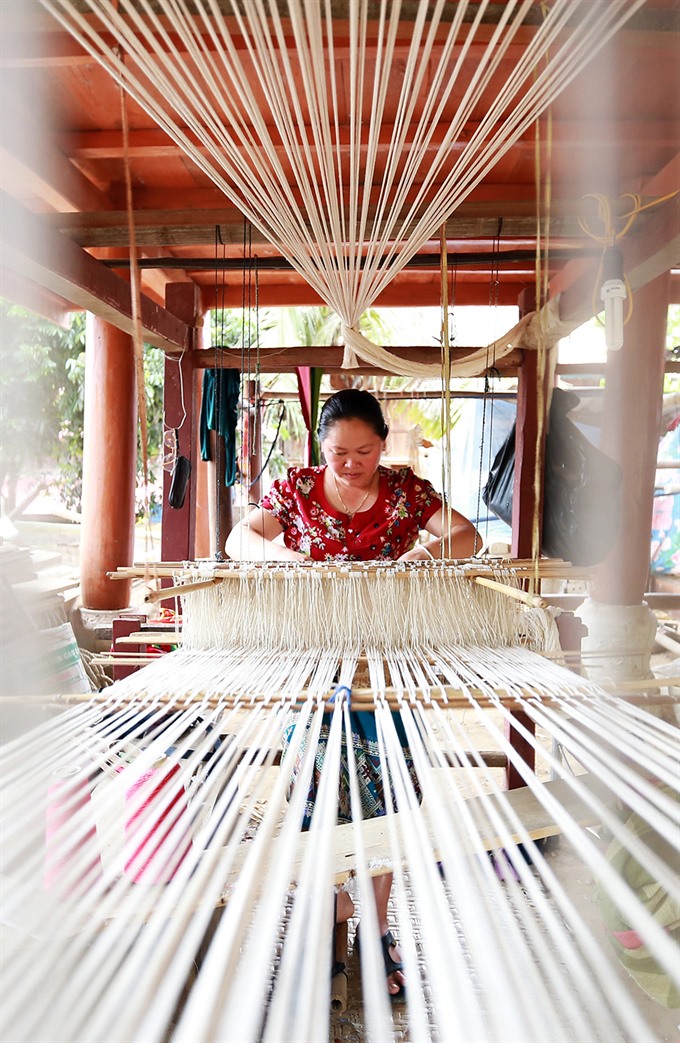 |
| Old art: Weaving brocade was founded a hundred years ago in Pa Xa Lào Hamlet in Điện Biên Province. VNA/VNS Photo Phan Tuấn Anh |
Each type of patterned brocade cloth is not only specific to a traditional craft village in Việt Nam, but also a demonstration of the cultural characteristics of ethnic minority groups. Efforts are being made to preserve this delicate craft. Bùi Quỳnh Hoa and Văn Dũng report.
When the Mộc Cuôi Giang mountain range is still covered in mist, Pa Xa Lào Hamlet is already bustling. Craftspeople are in a rush to finish their brocade costumes before the Tết (Lunar New Year) holiday.
Next to the Nậm Núa Stream, Pa Xa Lào, in Điện Biên Province, consists of 56 households of ethnic Lào who are masters of brocade weaving.
According to Lò Thị Thơm, a local craftswoman, the craft was founded a hundred years ago, and the hamlet has become well-known for its weaving techniques and unique patterns.
Along with the special methods, which have been handed down from generation to generation, Lào people here also use leaves to dye the fabrics.
“Before Tết, demand for brocade from local residents and others nationwide increases dramatically, so we have to work from dawn till dark,” said Thơm.
In order to meet the increasing demand for products, Lò Văn Ón, the Party Secretary of Pa Xa Lào Hamlet, said they had worked to preserve and develop the craft, expand to markets nationwide, and increase their income.
“It’s also a good way to present our identity on the domestic and international stage,” Ón said.
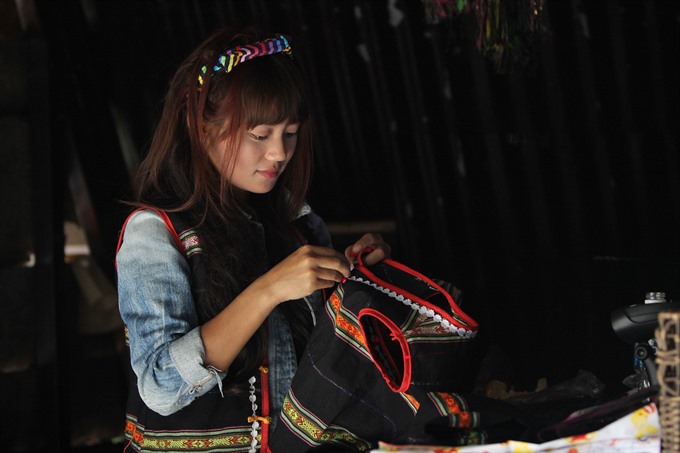 |
| Popular: Handmade brocade is favoured by both local and foreign visitors. VNA/VNS Photo Dương Giang |
Cán Tỷ brocade – Mông pride
Most brocade products are made by ethnic Mông people, especially those in the northern mountainous province of Hà Giang.
Cán Tỷ Village in Quản Bạ District, which is famous for growing flax, is a small village of 270 households, but all are Mông people.
Villagers don’t know exactly when the craft was founded.
Although mainly growing maize, potato and cassava, local women and young girls here are skilled in making brocade costumes and many other products. The items are popular among locals and tourists.
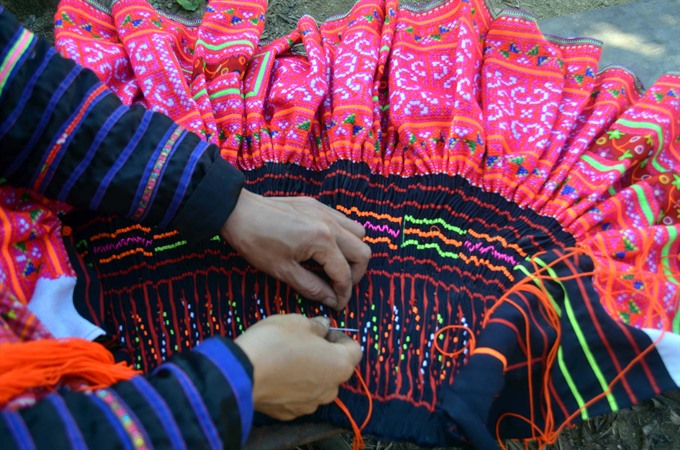 |
| Deft hands: Putting final touches to handmade products. VNA/VNS Photo Xuân Tư |
Traditionally, Mông girls have to learn how to sew before marriage to make their own wedding dresses. When they are just little girls, they are trained by their mothers and grandmothers in embroidery, needlework and weaving. In this way, cultural characteristics have not faded over time.
Cù Thị Mỵ, an elderly woman in the village, said: “When the children get married, two sets of clothes must be prepared. And when a Mông person dies, they must have three sets of clothes to wear, so that they can meet their ancestors.”
“It’s necessary to plough the soil thoroughly to plant flax. After harvest, the plant is dried carefully and not exposed to the rain. In order to have a soft and beautiful product, we have to make fibres thin and even,” Mỵ added.
 |
| Different designs: More and more foreigners are taking an interest in brocade cloth. VNA/VNS Photo Nguyễn Dũng |
According to the Vice Chairman of Cán Tỷ Village’s People’s Committee, Sầm Văn Dũng, the village’s economy depends mostly on maize and rice. However, in order to preserve the craft, village authorities have focused on vocational training and creating jobs. A linen-weaving co-operative was also established in 2011.
“Fourteen households have joined the co-operative and engaged in the craft for a long time,” Dũng said.
“The co-operative has provided training courses for women and girls in the village. The craft requires a skilled hand. At the beginning, we weave just for ourselves, and later for tourists who want to buy souvenirs. So far, our products including skirts, dresses, bags, blankets and towels have proven popular,” he added.
With Quản Bạ District’s tourism potential, Mông people in Cán Tỷ Village have more opportunities to develop brocade weaving and build a brand. This would contribute to the preservation and promotion of local ethnic culture.
Brocade products, which are common among different ethnic groups with typical patterns reflecting the culture of each group, are now being promoted as local specialities.
A cultural brocade festival was recently held in the Central Highlands province of Đắk Nông, in an effort to encourage the preservation and development of ethnic groups’ brocade products in the context of global integration.
Authorities and designers also want the traditional fabric to be widely used in the fashion industry, presenting Vietnamese culture to the world. VNS
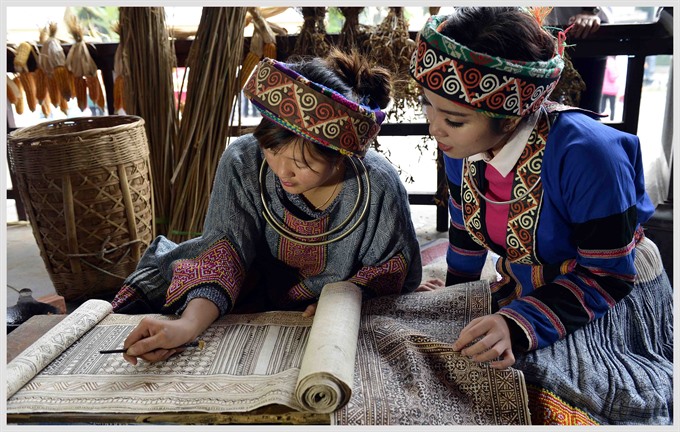 |
| Planning: Drawing patterns on Mông people’s brocade. VNA/VNS Photo Thanh Hà |
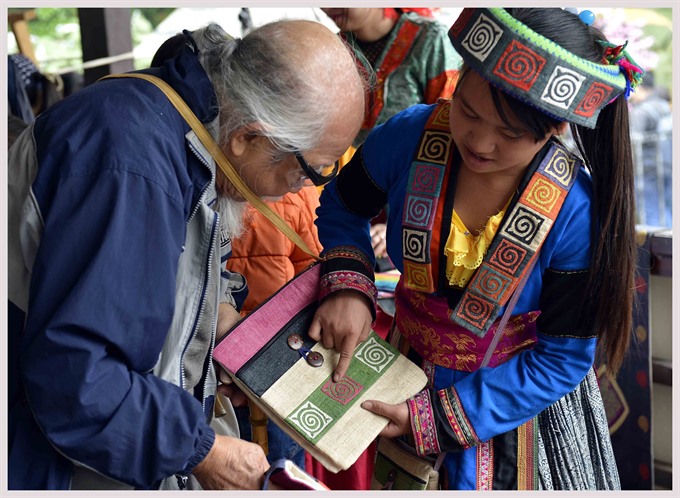 |
| Souvenirs: A Mông girl tells visitors about their brocade patterned products. VNA/VNS Photo Thanh Hà |
 |
| Local dress: When visiting the northern mountainous province of Hà Giang, foreigners can’t help but try on the handmade brocade products. VNA/VNS File Photo |
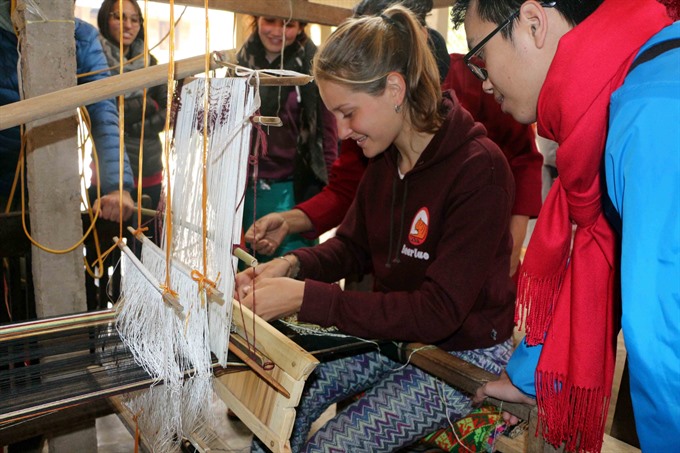 |
| Give it a go: A tourist tries to weave brocade in Pa Xa Lào Hamlet in Pa Thơm Village. VNA/VNS File Photo |

